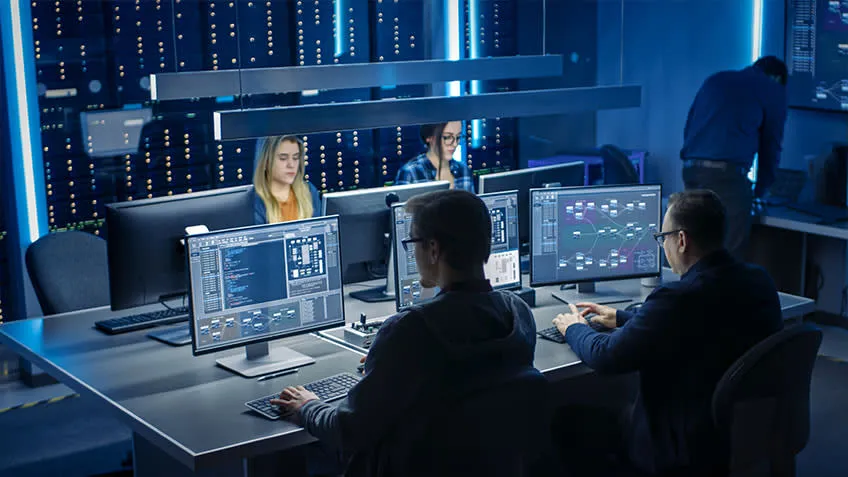The pandemic has brought to fore the significance of health and wellness. Educational health videos are an excellent tool to convey basic, yet crucial, medical information. A short, high-quality, informative and engaging health education video effectively aids patients to understand their medical condition and take appropriate action. The other significant benefits of suitable health education videos include:
- saving healthcare staff’s time,
- improving health literacy, and
- enhancing quality measures in inpatient care.
An effective health education video includes relevant information with clinical oversight. The videos should be short (3 to 5 mins), concise, and visually and audibly clear to make patients comfortable about their medical condition. Once you know what to create, you can use an online video editor, to create and finetune high-value health education videos.
What Makes a Good Health Education Video?
When health conditions require extended hospitalization, patients, families, and caregivers are under immense stress. It is necessary to give them simple, clear clinical information that is easy to comprehend and retain.
- Engage the patients
There are many concerns in patients’ minds while on the path of recovery. Hence, anything unclear, difficult to read, and understand won’t help them. If the video doesn’t attract patients’ attention, they won’t watch it. Even if they do, they won’t be able to retain the information for a long time, and hence it won’t be valuable. The proper health education video must be short and focus on relevant information only. Studies suggest that patients don’t watch anything over 7 minutes, the ideal length being around five minutes.
- Patient-Centric: At times, healthcare facilities create videos that fulfil the purpose of marketing their brand rather than focusing on patients’ needs. For example, a video on hospital discharge and home care tips may include information about the hospital and its awards. Such a video is not patient-centric and will not be effective.
- Clinical Evidence-Based: The health education video must provide the right level of assurance to the viewers. Since the videos relate to patients’ physical and mental health, all information must be clinically proven and fact-based. Numbers build confidence in patients’ minds. Refrain from adding any fluff or incomplete information that might instil doubts in patients or their loved ones.
- High Quality and User Tested: Lastly, an essential part of creating an effective health education video is quality and user acceptance. The text, visuals and audio should be clear and easy to understand. Avoid using any over-the-top, flashy or loud details in the health videos. The best way to test the effectiveness of the video is by showing it to a sample of users and taking the inputs. The key feedback questions should be: Is the video easy to understand? Is the video concise and provides doable information? Would they like to save the video for later reference? You can use the feedback to make desired improvements.
- Real-Life Scenarios: A patient relates most to someone who has faced a similar situation. The health education videos must illustrate ample real-life scenarios. When the patient sees the success stories of real people, they will automatically feel empowered and motivated to deal with their situation.
The above factors are a must to consider while creating health videos. Easy-to-use online video editors that provide plenty of inbuilt templates and editing tools, making video creation super easy. Since the audience of health education videos are patients, the creator must be empathic and understand the significance of these videos.
The Benefits of Health Education Videos
Compelling health education videos provide considerable benefits in patients’ clinical support. They improve patients’ understanding of their medical conditions, treatment, upcoming procedures and essential home care tips post-hospitalization. In addition, accurate and engaging health education videos reduce the burden on the clinical staff. Thus, instead of spending their time educating patients on the basics, they can attend to patients in urgent need.
Below are a few key benefits of health education videos:
- Improves health literacy: Patients come from different backgrounds and regions; their lifestyles and understanding may differ. Hence, easy-to-understand health education videos can equip them better to handle their medical condition. They may help remove any doubts and fear about the treatment and procedures. The viewers can retain these health videos and refer to them later to build more confidence about their situation.
- Reduces the workload of healthcare staff: The clinical care of patients is a daunting task; it requires a lot of patience and time. Health education videos lessen the time and effort of the healthcare team when it comes to educating and assuring the patients and their caregivers. A compelling video is a good resource and clears most patients’ doubts. The medical staff can use this extra time to focus on other urgent cases, saving more lives.
- Improves the discharge process: Another critical advantage of informative health education videos is the improved discharge process. Post-hospitalization follow-ups are an essential part of a patient’s recovery. They retain critical knowledge and tips once they return home and can efficiently deal with any situation later. For example, if a patient develops any complications or has side effects post-surgery, they will know how to manage it better instead of panicking.
Wrapping up
Health education videos bridge the gap between the patient and the health information they need to make critical clinical decisions. An excellent patient-centric video contains simplified and easy-to-understand health topics. Ensure that the video is short, has concise, relevant content, and visual aids with good real-life examples. These informative videos not only help patients during hospitalization and discharge but also assist in special cases—patients with special needs and learning disabilities.
